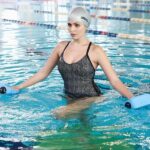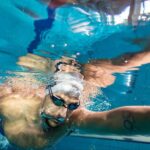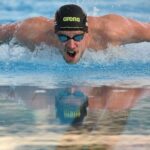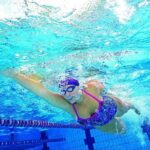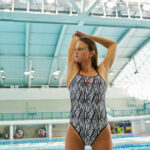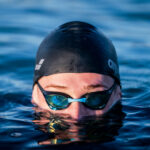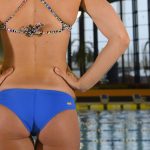Swimming: age does not count!
You can exercise at any age and there are certainly no age limits on swimming at the pool. Swimming could (and should) play a significant role in counteracting the natural physiological processes of ageing.
The rules to follow
As with all competitive and non-competitive physical activities, you need to follow some important rules to achieve excellent results without any unpleasant surprises:
- Undergo a careful medical check-up, I always recommend an ECG, if possible while performing strenuous exercise (stress test).
- Exercise regularly (at least twice or three times a week).
- Eat properly and keep suitably hydrated.
- Know your limits, i.e. do not overdo it.
The benefits of swimming for the over-60s
Swimming is one of the most popular sports with the over 60s, approximately 30% of people in this age group choose it as their main type of exercise.
It is an excellent way of maintaining your muscular strength and the elasticity of your tendons. But let’s not forget the benefits for those who suffer from diabetes, heart/respiratory problems or depression.
So let’s take a more detailed look at the benefits this sport can offer:
1. There are guaranteed benefits for your cardiovascular and respiratory systems.
2. It improves the circulation of your blood and helps widen your blood vessels, due to the temperature of the water and the fact you float on your stomach or back.
3. Your joints come under less stress and strain.
4. You can train without jeopardising your joints and backbone; the regular movement of your legs, arms and neck can help get rid of any annoying stiffness you feel at rest.
5. Due to its distinctive properties, water constantly massages your skin producing benefits for any problems associated with your veins or arteries, as well as all your skin tissues.
6. Swimming trains your mind and will help you regain confidence and socialise.
Teaching method for the over 60s
My grandmother always says that as you grow older you go back to being a child. I do not know if this is true, but I know for sure that the teaching method in the water for the over 60s is very similar to that for children. Elasticity and common sense are at the basis of your training; nevertheless, your coach should take into account any physical limitations you might have.
Just as in the case with children, sliding and floating are extremely important in your first lessons; the backstroke and freestyle are the best strokes for avoiding problems with your joints, and using a board for certain drills, particularly when performing the backstroke leg kick, will allow your back to be constantly massaged by the water.
Do not forget to perform each drill carefully, do not be in a hurry but keep on setting yourself new goals.
Enjoy your training, relax a bit and get ready for the next article!
Written by:
Marco Borreca
Marco Borreca was born in Milan in 1985. After his competitive swimming career, he continued his sports studies graduating from the faculty of Preventive and Adaptive Motor Sciences in Pavia. He has been working as a swimming/ fitness instructor and rehabilitation expert at various sports centres since he was very young. He mainly focuses on using water for recovering motor skills in the case of sports injuries and disabilities. He currently works for a municipal sports centre as the Head of Fitness and also works for a private practice as a kinesiologist.
